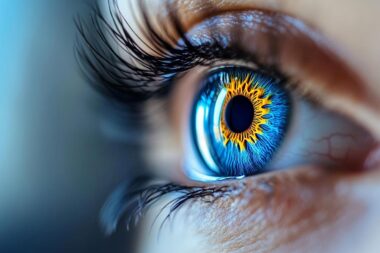 According to the World Health Organization, more than 200 million people worldwide suffer from degenerative retinal diseases, including macular degeneration and retinitis pigmentosa. These conditions irreversibly damage photoreceptors — the cells responsible for capturing light — and lead to progressive vision loss. Against this backdrop, a breakthrough from researchers at Brown University and the National Institutes of Health could redefine how such conditions are treated.
According to the World Health Organization, more than 200 million people worldwide suffer from degenerative retinal diseases, including macular degeneration and retinitis pigmentosa. These conditions irreversibly damage photoreceptors — the cells responsible for capturing light — and lead to progressive vision loss. Against this backdrop, a breakthrough from researchers at Brown University and the National Institutes of Health could redefine how such conditions are treated.
In a study published in the peer-reviewed journal ACS Nano and funded by the NIH, the research team describes a novel method in which gold nanoparticles are used to activate surviving retinal cells, bypassing destroyed photoreceptors entirely.
How It Works Gold nanoparticles — structures thousands of times thinner than a human hair — are injected into the vitreous humor of the eye, where they disperse evenly across the retina. When targeted with a focused beam of near-infrared light, the particles generate minute, localized thermal pulses. These pulses directly stimulate bipolar and ganglion cells, triggering the transmission of electrical signals to the visual cortex and restoring a functional pathway that photoreceptors — rods and cones — once provided.
Why It Matters In most degenerative retinal diseases, photoreceptors deteriorate, but the downstream signal-carrying cells often remain intact. This technique capitalizes on that biological reserve, creating a functional bypass without the need for invasive surgery or genetic modification.
Experimental Results In preclinical trials on mice with induced retinal degeneration, the team injected a gold nanoparticle solution and projected patterned laser stimuli — simple geometric shapes — onto the retina. Calcium imaging confirmed that bipolar and ganglion cells were activated in exact correspondence with the projected patterns. Electrophysiological recordings revealed increased activity in the visual cortex, demonstrating that visual information was indeed being transmitted.
No signs of inflammation or toxicity were detected during follow-up monitoring. The nanoparticles remained active within the retina for several months, suggesting the potential for long-lasting therapeutic effects.
Clinical Potential The envisioned clinical system combines the nanoparticles with a specialized pair of glasses or goggles equipped with a miniature near-infrared laser and a camera. The camera captures images from the surrounding environment, while the laser projects corresponding patterns onto the retina to stimulate the nanoparticles. Unlike current FDA-approved electronic retinal implants, which are limited to small electrode arrays with restricted fields of vision, this method could potentially engage the entire retina.
The procedure is minimally invasive: instead of surgical implantation, it requires only an intravitreal injection — one of the most common and safest interventions in ophthalmology. Furthermore, because the system uses near-infrared light rather than visible light, it can operate alongside any residual natural vision without interfering with it.
Looking Ahead Before entering clinical use, the technology must undergo trials in larger animal models, long-term safety studies, and optimization of stimulation parameters. Nevertheless, it is already seen as both a medical breakthrough and a compelling investment opportunity in the biomedical nanotechnology sector. Analysts estimate that, if successfully commercialized, such solutions could represent a multibillion-dollar market within the next decade.
In this vision, gold ceases to be a symbol of wealth and becomes an instrument for restoring a lost sensory world — a bridge between darkness and light, with the potential to return not only sight but also the fullness of life.
